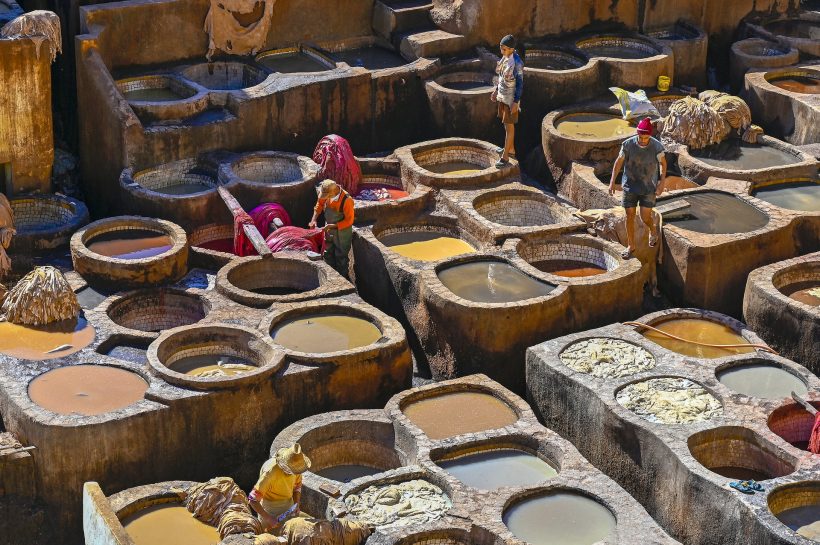
Morocco Tannery of Fes often located near watercourses, usually some distance from residential quarters because of the unpleasant odours that they produced, tanneries made a substantial contribution to a city’s economy. Tanning is a craft with traditions that go back thousands of years. The process turns animal hides into soft, rot-proof leather. Once tanned, the hides are passed on to leatherworkers.
(chouaras) are located near Wadi Fès. The hides of sheep, goats, cows and camels undergo several processes – including the removal of hair and flesh, followed by soaking in vats, then by drying and rinsing – before they are ready to be dyed and handed over to leatherworkers.
Some of which have been in use for centuries, are used for soaking skins after the hair and flesh have been removed. The tanning solution that turns them into leather is obtained from the bark of pomegranate or mimosa.
In generous quantities of water. They are then softened by being steeped in baths of fatty solutions.
Are hung out to dry on the terraces of the medina, as here, or in other parts of Fès, such as the Bab el-Guissa cemetery. The roofs of houses and the hillsides around the city may also be used as drying areas.
Obtained from certain plants and minerals, are still used by Moroccan craftsmen to colour the hides. However, chemical dyes are also used today.
Is used to make many types of useful and decorative objects, such as embroidered bags, babouches, pouffes and clothing. These goods are offered for sale in the numerous souks in the medina of Fès.
If you’d like to add this destination to your own custom tour contact your Travel Agency Morocco– together we’ll make it happen!